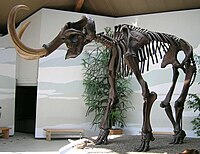
Low assimilate partitioning to root biomass is associated with carbon losses at an intensively managed temperate grassland
Sign Up to like & getrecommendations! Published in 2020 at "Plant and Soil"
DOI: 10.1007/s11104-020-04771-2
Abstract: This study aimed to investigate how efficiently assimilated carbon (C) is incorporated in plant biomass at an intensively managed old permanent grassland, how C is partitioned between shoots and roots and what are the implications… read more here.
Keywords: carbon; biomass; low assimilate; root ... See more keywords

Bringing diversity back to agriculture: Smaller fields and non-crop elements enhance biodiversity in intensively managed arable farmlands
Sign Up to like & getrecommendations! Published in 2018 at "Ecological Indicators"
DOI: 10.1016/j.ecolind.2018.03.001
Abstract: Abstract Agricultural intensification has substantially reduced multi-scale habitat heterogeneity, including increased field size and loss of semi-natural structures, thus resulting in large-scale deterioration of farmland biodiversity. Biodiversity conservation in farmland has therefore become a conservation… read more here.
Keywords: farmland; managed arable; farmland biodiversity; biodiversity ... See more keywords

Retained vegetation density of streamside management zones and stringers in southern intensively managed pine forests
Sign Up to like & getrecommendations! Published in 2017 at "Forest Ecology and Management"
DOI: 10.1016/j.foreco.2017.04.024
Abstract: Abstract In the southern U.S. (hereafter, South), institutional forest owners engaged in forest certification programs often retain unharvested or less-intensively harvested vegetation when clearcut harvesting intensively managed pine ( Pinus spp.) forests (IMPFs). As a… read more here.
Keywords: managed pine; density; management; vegetation ... See more keywords

Floodplains as a source of fine sediment in grazed landscapes: Tracing the source of suspended sediment in the headwaters of an intensively managed agricultural landscape
Sign Up to like & getrecommendations! Published in 2017 at "Geomorphology"
DOI: 10.1016/j.geomorph.2018.01.022
Abstract: Abstract The flux of fine sediment within agricultural watersheds is an important factor determining the environmental quality of streams and rivers. Despite this importance, the contributions of sediment sources to suspended sediment loads within intensively… read more here.
Keywords: fine sediment; source; sediment; suspended sediment ... See more keywords

Machine learning improves predictions of agricultural nitrous oxide (N2O) emissions from intensively managed cropping systems
Sign Up to like & getrecommendations! Published in 2020 at "Environmental Research Letters"
DOI: 10.1088/1748-9326/abd2f3
Abstract: The potent greenhouse gas nitrous oxide (N2O) is accumulating in the atmosphere at unprecedented rates largely due to agricultural intensification, and cultivated soils contribute ∼60% of the agricultural flux. Empirical models of N2O fluxes for… read more here.
Keywords: oxide n2o; nitrous oxide; cropping systems; model ... See more keywords

A New Site Index Model for Intensively Managed Loblolly Pine (Pinus taeda) Plantations in the West Gulf Coastal Plain
Sign Up to like & getrecommendations! Published in 2019 at "Forest Science"
DOI: 10.1093/forsci/fxz050
Abstract: Site index (SI) estimation for loblolly pine (Pinus taeda L.) plantations is important for the successful management of this important commercial tree species in the West Gulf Coastal Plain of the United States. This study… read more here.
Keywords: coastal plain; intensively managed; gulf coastal; west gulf ... See more keywords

Nitrogen Recovery from Enhanced Efficiency Fertilizers and Urea in Intensively Managed Black Walnut (Juglans nigra) Plantations
Sign Up to like & getrecommendations! Published in 2021 at "Forests"
DOI: 10.3390/f12030352
Abstract: Intensively managed forest plantations often require fertilization to maintain site fertility and to improve growth and yield over successive rotations. We applied urea-based “enhanced-efficiency fertilizers” (EEF) containing 0.5 atom% 15N at a rate of 224… read more here.
Keywords: uncoated urea; efficiency fertilizers; intensively managed; enhanced efficiency ... See more keywords

Haemonchus contortus Parasitism in Intensively Managed Cross-Limousin Beef Calves: Effects on Feed Conversion and Carcass Characteristics and Potential Associations with Climatic Conditions
Sign Up to like & getrecommendations! Published in 2022 at "Pathogens"
DOI: 10.3390/pathogens11090955
Abstract: The objectives of the study were: (a) to study the effect of Haemonchus spp. on the growth performance characteristics of fattening calves, (b) to assess any potential effects on carcass characteristics and (c) to investigate… read more here.
Keywords: managed cross; climatic conditions; carcass characteristics; intensively managed ... See more keywords

Grassland communities of traditional orchards in the Western Carpathians (Slovakia)
Sign Up to like & getrecommendations! Published in 2017 at "Acta Societatis Botanicorum Poloniae"
DOI: 10.5586/asbp.3552
Abstract: Traditional orchards are a valuable feature of the rural landscape and they are specific for regions with scattered settlement such as the Myjava hilly land and White Carpathians. Here, the permanent species-rich grasslands beneath trees… read more here.
Keywords: traditional orchards; species composition; arrhenatheretum elatioris; intensively managed ... See more keywords